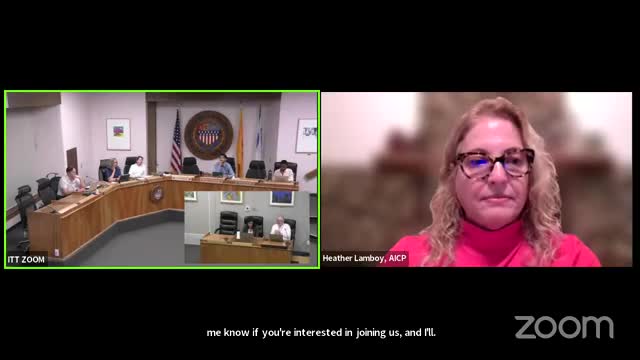Santa Fe launches groundbreaking heat island study results
October 04, 2024 | Santa Fe, Santa Fe County, New Mexico
This article was created by AI summarizing key points discussed. AI makes mistakes, so for full details and context, please refer to the video of the full meeting. Please report any errors so we can fix them. Report an error »

In a recent government meeting, the Santa Fe Planning Commission discussed the results of a significant heat island study conducted in collaboration with NOAA and Capa Strategies. The study, known as the Santa Fe Heat Watch Report, aimed to map temperature variations across the city, highlighting the impact of urban development on local climate conditions.
The project was initiated through a grant of $14,500 from NOAA, supplemented by funding from the city's Environmental Services Department. It was originally spearheaded by former Sustainability Coordinator Allison Long, who played a crucial role in securing the grant and coordinating volunteer efforts. Following her departure, the Planning Department took over the project management.
During the meeting, Dan Escobel, a representative from the Planning Department, outlined the methodology of the study, which involved volunteers driving predetermined routes to collect temperature data at various locations throughout Santa Fe. The study measured temperatures at three different times of the day—morning, afternoon, and evening—allowing for a comprehensive analysis of how urban heat islands manifest in different areas.
The findings revealed a notable temperature disparity of up to 14 degrees Fahrenheit across the city, with the southwestern regions consistently recording the highest temperatures. This variation was attributed to factors such as elevation changes and the presence of tree canopies, which provide cooling effects. Areas with less vegetation, particularly certain mobile home parks, were identified as some of the hottest spots in the city.
Joey Williams from Capa Strategies elaborated on the implications of the data, emphasizing its potential use in developing targeted heat action plans and informing public health responses to extreme heat events. The data will be integrated into the city’s GIS mapping software, making it accessible for various departments, including water management, to enhance planning and resource allocation.
The meeting concluded with a discussion on the next steps for utilizing the heat island data, including potential outreach efforts to vulnerable communities and strategies for increasing urban greenery to mitigate heat effects. The commission expressed enthusiasm for the project and its implications for future urban planning initiatives in Santa Fe.
The project was initiated through a grant of $14,500 from NOAA, supplemented by funding from the city's Environmental Services Department. It was originally spearheaded by former Sustainability Coordinator Allison Long, who played a crucial role in securing the grant and coordinating volunteer efforts. Following her departure, the Planning Department took over the project management.
During the meeting, Dan Escobel, a representative from the Planning Department, outlined the methodology of the study, which involved volunteers driving predetermined routes to collect temperature data at various locations throughout Santa Fe. The study measured temperatures at three different times of the day—morning, afternoon, and evening—allowing for a comprehensive analysis of how urban heat islands manifest in different areas.
The findings revealed a notable temperature disparity of up to 14 degrees Fahrenheit across the city, with the southwestern regions consistently recording the highest temperatures. This variation was attributed to factors such as elevation changes and the presence of tree canopies, which provide cooling effects. Areas with less vegetation, particularly certain mobile home parks, were identified as some of the hottest spots in the city.
Joey Williams from Capa Strategies elaborated on the implications of the data, emphasizing its potential use in developing targeted heat action plans and informing public health responses to extreme heat events. The data will be integrated into the city’s GIS mapping software, making it accessible for various departments, including water management, to enhance planning and resource allocation.
The meeting concluded with a discussion on the next steps for utilizing the heat island data, including potential outreach efforts to vulnerable communities and strategies for increasing urban greenery to mitigate heat effects. The commission expressed enthusiasm for the project and its implications for future urban planning initiatives in Santa Fe.
View full meeting
This article is based on a recent meeting—watch the full video and explore the complete transcript for deeper insights into the discussion.
View full meeting
